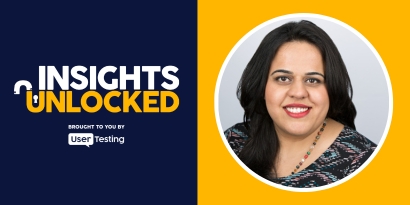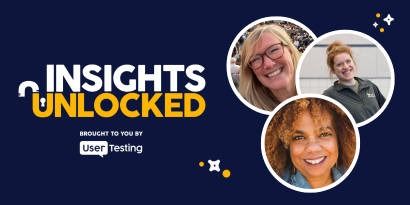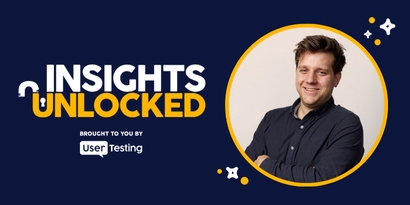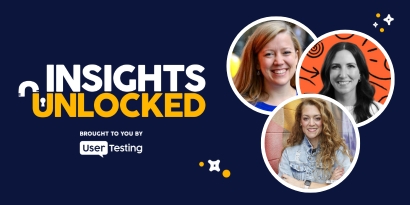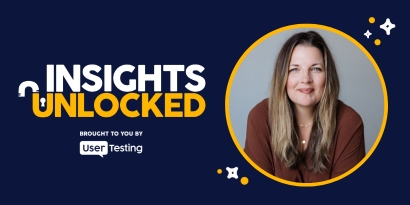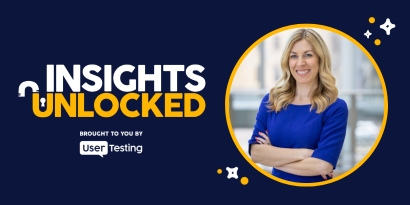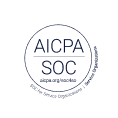
Episode 158 | February 17, 2025
Effectiveness vs. efficiency in design with Alastair Simpson
Discover why Dropbox’s Alastair Simpson values effectiveness over efficiency in design, leadership, and remote work.
Effectiveness vs. efficiency in design: lessons from Dropbox’s Alastair Simpson
Are you focused on checking tasks off a list, or are you actually solving the right problems?
This is the challenge that Alastair Simpson, VP of Design at Dropbox, posed in this Insights Unlocked episode conversation with UserTesting's Jason Giles, VP of Product Design. As companies scale, many fall into the trap of measuring efficiency instead of impact—prioritizing speed and process adherence over meaningful outcomes.
In this episode, Alastair shares how he has navigated scaling design teams, leading in a Virtual-First environment, and leveraging AI in UX research. Below, we dive into his insights on why effectiveness matters more than efficiency, how to build a strong design culture, and what it takes to deliver real impact in remote work.
Why effectiveness matters more than efficiency
Many companies push for efficiency—faster sprints, streamlined workflows, and tight process control. But Alastair argues that efficiency alone isn’t enough.
Too often, he said, companies get stuck measuring adherence to process and outputs rather than focusing on the quality of outcomes.
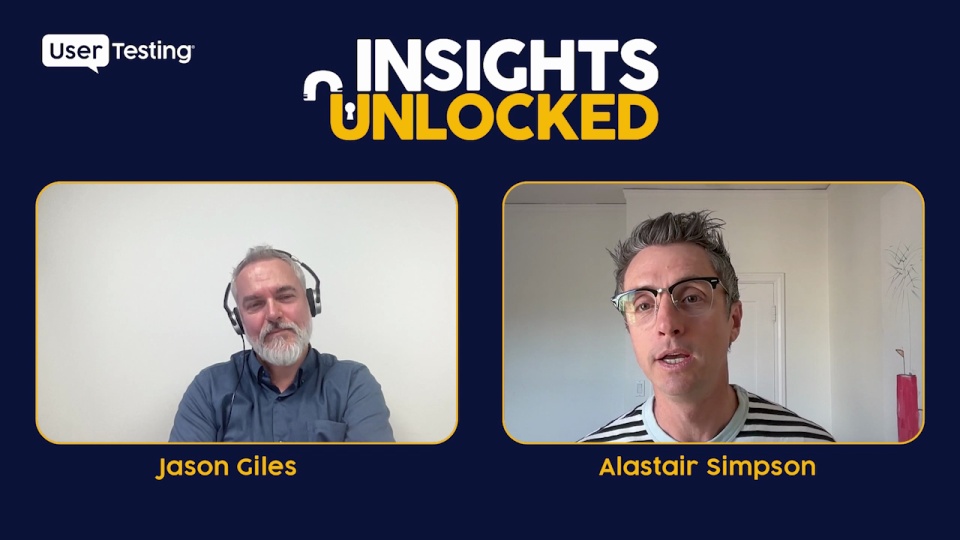
He said there is a place for process, such as the checklist pilots follow before flying, but we also need to be remembering that our customers don't care we created a new thing, only that that whatever new thing we created solves their problems. “Did we create something meaningful for our customers?,” he said.
“At the end of the day, what matters is the outcome, not how many steps it took to get there.” – Alastair Simpson
This shift in mindset is critical for scaling design teams. As companies grow, leaders need to encourage creative problem-solving rather than rigid process adherence.

How to scale design teams without losing quality
Alastair has led high-growth design teams at both Atlassian and Dropbox, two companies that scaled rapidly. A major challenge in these environments is maintaining design quality while growing fast.
His solution? Build a strong design culture anchored in key principles:
1️⃣ Regular critique – At Dropbox, design critiques happen twice a week to ensure continuous feedback.
2️⃣ Autonomy with accountability – Designers own their work beyond the Figma file—they’re responsible for how it ships.
3️⃣ Customer-centricity – Success isn’t about following a perfect design process; it’s about delivering impactful user experiences.
“I don’t care if a design went through the perfect number of iterations or if it followed some predefined process,” Simpson says. “What I care about is whether we delivered a great experience for the customer.”
By prioritizing effectiveness over efficiency, design teams can scale without sacrificing quality.
The role of virtual-first work in driving effectiveness
Scaling a design team is even more complex in a remote-first environment. Simpson co-led Dropbox’s transition to a Virtual-First model, where the company operates 90% remotely, with intentional in-person gatherings to build culture and collaboration.
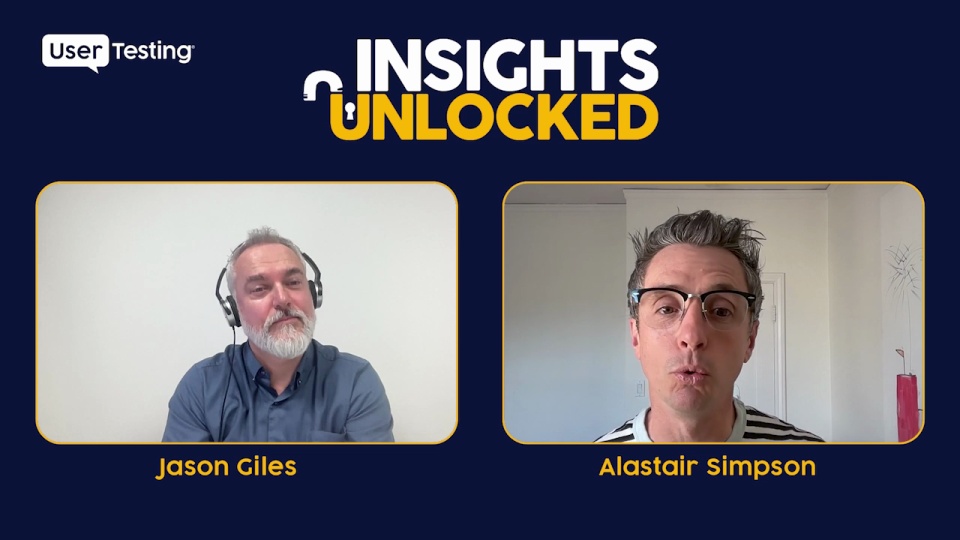
“We don’t come together just because it’s Tuesday or Wednesday,” Alastair explains. “We gather for meaningful moments—things like quarterly retros, team offsites, or leadership workshops—where in-person collaboration truly adds value.”
“We saw the pandemic as an opportunity to design a better way of working.” – Alastair Simpson
By optimizing remote work around effectiveness rather than time logged, Dropbox has seen higher productivity, increased employee satisfaction, and access to a broader talent pool.
How AI is enhancing UX research and design
Another way Dropbox is increasing effectiveness over efficiency is by leveraging AI in UX research.
One of the biggest challenges in UX is knowledge retrieval—finding past research insights quickly without duplicating work. Dropbox uses an AI-powered agent to solve this. “Instead of hunting through old research documents, you can query our AI agent to find relevant studies instantly,” he said.
This is similar to UserTesting's Insights Hub.
While AI accelerates certain tasks, Alastair emphasizes that it doesn’t replace core design skills. “Design still requires human judgment and taste,” he says. “AI can help with speed, but it’s up to us to ensure we’re solving the right problems.”
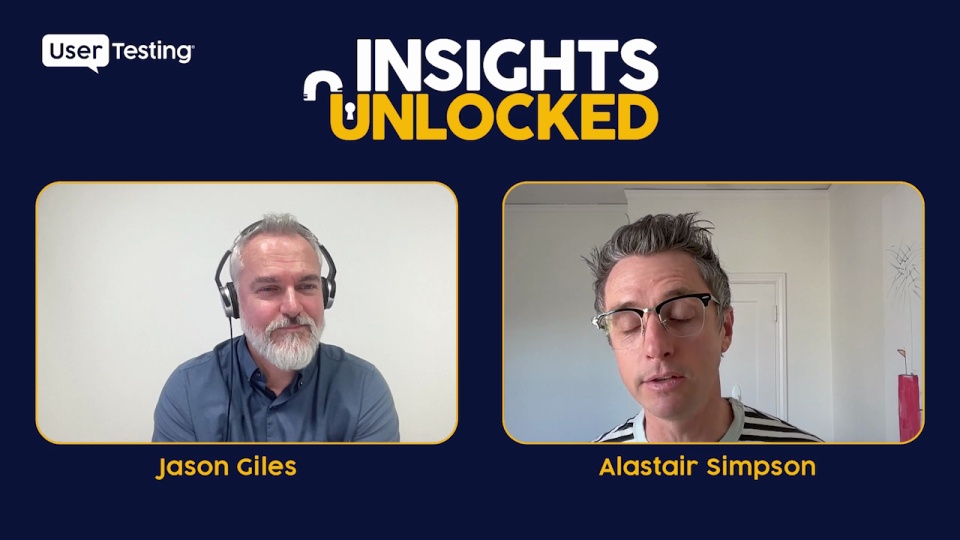
Applying effectiveness across an organization
The effectiveness-over-efficiency mindset isn’t just for design teams—it can transform an entire company, Jason said.
- In product development, focus on solving the right user problems, not just shipping quickly.
- In marketing, measure success by customer engagement and conversions, not just output volume.
- In customer support, prioritize real problem resolution rather than ticket closure speed.
- In recruiting, hire for long-term impact, not just time-to-fill metrics.
By aligning teams around outcomes rather than processes, organizations can drive better innovation, collaboration, and customer satisfaction.
At the heart of it all, effectiveness means focusing on what truly matters—delivering value, not just working faster. As Alastair said, “We need to be intentional about how we work. It’s not about efficiency for efficiency’s sake—it’s about making sure we’re solving the right problems, in the best way possible.”
Episode links:
- Building strong design teams that scale: This article delves into strategies for developing design teams capable of growing without compromising quality.
- Generative vs. evaluation research: An exploration of different research methodologies, focusing on assessing the effectiveness and efficiency of products and designs.
- Unite designers and developers with scalable design systems: A discussion on the challenges and solutions in scaling design systems, emphasizing the importance of clear standards and collaboration.
